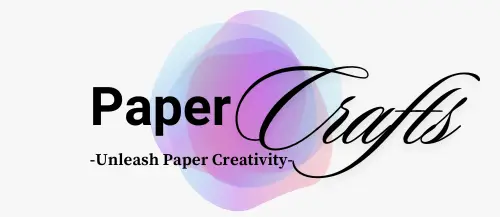Origami For Beginners: A Comprehensive Guide to Mastering the Art of Paper Folding
Origami for beginners is a captivating journey into the world of paper folding. This ancient Japanese art form transforms simple sheets of paper into intricate sculptures, ranging from delicate cranes to complex geometric shapes. This guide aims to provide a detailed and thorough introduction to origami, ensuring that even those new to the craft can start folding with confidence and creativity.
What is Origami?
Origami, derived from the Japanese words “oru” (to fold) and “kami” (paper), is the art of folding paper to create decorative shapes and figures. The practice of origami dates back to ancient Japan, where it was initially used for ceremonial purposes and gift-wrapping. Over the centuries, it has evolved into a popular hobby and an art form appreciated worldwide for its beauty and complexity.
Getting Started with Origami For Beginners
Choosing the Right Paper
For beginners, it is essential to start with the right type of paper. Origami paper, known as “kami,” is typically square and comes in a variety of colours and patterns. It is often thin and easy to fold. However, for practice, any square piece of paper can be used, including old newspapers or sheets from notebooks. As you progress, you might explore different types of paper such as tissue paper, foil paper, and specialty papers designed for more advanced projects.
Basic Origami Tools
While many origami projects can be completed with just your hands, a few tools can make the process easier:
- Bone folder: A tool used to make precise creases.
- Tweezers: Helpful for handling small or delicate folds.
- Scissors: Needed for projects that require cutting the paper into specific shapes.
Fundamental Origami Folds
Before diving into complex designs, it’s crucial to master some basic folds. These foundational techniques are the building blocks for more intricate origami projects:
Valley Fold
The valley fold is one of the most basic folds. To execute this, fold the paper towards you, creating a “V” shape. This fold is often used to create creases and establish the structure of more complex shapes.
Mountain Fold
The mountain fold is the opposite of the valley fold. Fold the paper away from you, forming a peak or “mountain.” This fold is used to create raised structures in your origami.
Reverse Fold
A reverse fold involves folding the paper in the opposite direction of an existing crease. This technique is essential for shaping and adding detail to your origami model.
Squash Fold
To perform a squash fold, open a flap and press it down flat. This fold is often used to create larger surfaces and is crucial for forming the main body of many designs.
Simple Origami Projects for Beginners
Starting with simple projects will help build your confidence and skills. Here are a few beginner-friendly designs to get you started:
Origami Crane
The origami crane is one of the most iconic origami figures. It’s a symbol of peace and longevity in Japanese culture. To make an origami crane:
- Begin with a square piece of paper.
- Fold in half diagonally to form a triangle.
- Fold the top layers downwards, then fold the sides in to form a kite shape.
- Fold the bottom edges upwards to create the wings and tail.
Origami Boat
An origami boat is a fun and simple project. Follow these steps:
- Start with a square piece of paper.
- Fold in half diagonally to form a triangle.
- Fold the top corners down to meet the bottom edge.
- Open up the flaps to reveal a boat shape.
Origami Butterfly
The origami butterfly is an elegant design that showcases the beauty of paper folding:
- Begin with a square piece of paper.
- Fold in half diagonally, then fold the top edges to meet the centre crease.
- Fold the top and bottom edges towards the centre.
- Fold the paper in half, then shape the wings by adjusting the folds.
Advancing Your Origami Skills
As you become more comfortable with basic folds and projects, you can start exploring more complex designs. Advanced origami involves intricate folding techniques and often requires precise measurements and patience. Some tips for advancing your skills include:
- Studying Diagrams and Instructions: Many origami designs come with detailed diagrams and step-by-step instructions. Following these carefully will help you understand more complex folds and sequences.
- Joining an Origami Community: Engaging with other origami enthusiasts can provide valuable insights, support, and inspiration. Online forums, local clubs, and social media groups are great places to connect with fellow paper artists.
- Experimenting with Different Papers: As you advance, experimenting with various types of paper can add new dimensions to your creations. Try using textured or coloured papers to see how they affect your designs.
Benefits of Practicing Origami
Engaging in origami offers numerous benefits beyond just creating beautiful paper figures:
- Enhances Fine Motor Skills: The precise movements required for folding paper can improve hand-eye coordination and dexterity.
- Encourages Patience and Focus: The art of origami requires concentration and patience, helping to develop mindfulness and attention to detail.
- Stimulates Creativity: Origami challenges you to think creatively and problem-solve, fostering innovative thinking and artistic expression.
Conclusion
Origami for beginners is a rewarding and accessible introduction to the art of paper folding. By mastering basic folds, starting with simple projects, and progressively tackling more complex designs, you can develop your skills and enjoy the many benefits of this timeless craft. Whether you are looking to create beautiful decorations, engage in a relaxing hobby, or enhance your creative abilities, origami offers endless possibilities and a fulfilling experience.


























